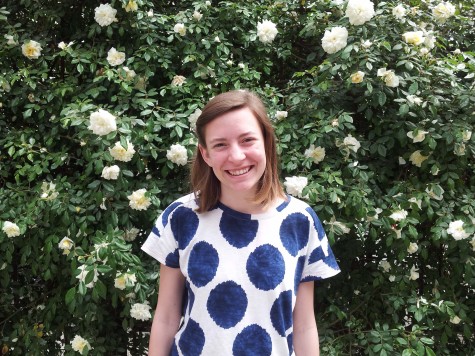Medical historian films documentary about human specimens
November 8, 2013
Dr. Lindsey Fitzharris does not fit the stereotype of someone fascinated by death: Her friendly smile and welcoming manner do not betray any hints of morbidity. But to the medical history scholar who spoke on campus on Halloween, the history of early surgery isn’t macabre. She’s interested in medical specimens not just as artifacts from medicine’s past, but as the remains of individuals and their stories.
“I consider myself a storyteller above all else,” Fitzharris says.
And the stories she tells are fascinating ones. The one that first attracted her interest to the medical history field was the story of an 18th century coachman: He had developed an aneurysm behind his knee that if left untreated would kill him. However, he could not have his leg amputated because his livelihood depended on his ability to drive a coach. The coachman went to John Hunter, a famous anatomist and surgeon, who performed a risky procedure that involved cutting off the blood supply to the aneurysm. The procedure was successful, and the coachman was so grateful to Hunter that he donated his body to the surgeon after his death. Hunter preserved the coachman’s leg, which is now part of the Hunterian Museum at The Royal College of Surgeons.
Unlike many of the stories Fitzharris tells, the story of the coachman has a happy ending. Many of the specimens at Barts Pathology Museum, one of the collections where Fitzharris does her research, are the remains of deformed people and others who were exploited by the medical community. Many of the remains are controversial, and some people argue that they should not be on display.
Fitzharris disagrees. She thinks medical specimens should be accessible to the public because they make the past more visceral and real.
“Interacting with these fascinating collections really drives home the fact that the people I read about in books were real, living beings whose lives were sometimes filled with unimaginable pain and suffering,” she says.
She believes it is important to remember these people’s lives because “medicine is built on the hard lessons learned from failure.”
To help educate the public about medicine’s history, Fitzharris is filming a documentary that will explain the origins of medical specimen collections. “Medicine’s Dark Secrets” was funded through an online crowd-funding site, and filming has already begun. The documentary asks the questions: “Who ends up on the dissection table in the eighteenth and nineteenth century, and how do they end up there?” To answer these questions, “Medicine’s Dark Secrets” will focus on specimens that emphasize the humanity of medical subjects.
“You can’t help but look at hands and wonder who they belong to,” says Fitzharris, whose first experience with death in a clinical setting involved a cadaver with “red fiery nail polish.”
According to Fitzharris, it is important to recognize the contributions of people who became specimens, because their medical contributions still affect us today.
“The truth is that medicine owes a great debt to the people who ended up floating in these jars,” she notes. “It’s through their deaths that many, many lives have been—and continue to be—saved.”


